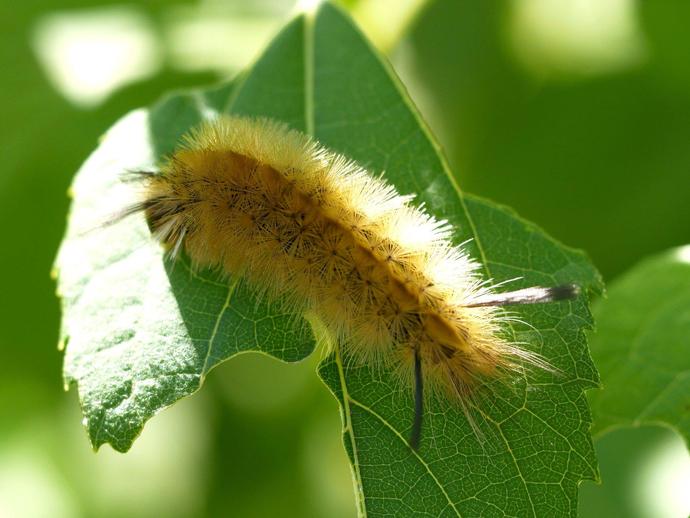October 19, 2020
It's time for another #BenInNature update! The banded tussock moth caterpillar (Halysidota tessellaris) looks like the kind of caterpillar that would really ruin your day if one fell down the back of your shirt. Despite its appearance, however, these caterpillars do not have stinging hairs! While the hairs of almost all caterpillars can cause irritation in individuals with sensitive skin, these little guys are nothing to worry about otherwise. As best I can tell, the chances of having an allergic reaction to a non-venomous caterpillar are about 1 in 100; in other words, they're nothing to flee from in terror, but I wouldn't handle one and then rub my eyes.
The banded tussock moth is also known as the pale tiger moth due to the patterning of the adult moths; they're sort of cream-colored with rippled bands across their wings. These moths are fairly common east of the Rocky Mountains, having one generation per year in the north and two or more in the south. The adult moths lay their eggs on the undersides of leaves, and the caterpillars can eat a wide variety of plants, including walnut, willow, hazel, oak, grape, chestnut, blueberry, elm, and plenty of others. Fortunately, these caterpillars tend to be fairly solitary, so you don't have to worry too much about them defoliating your trees.
Adult banded tussock moths have an unusual (and disgusting!) habit that offers them a chemical protection from predators. They are drawn to the decaying leaves of plants containing pyrrolizidine alkaloids, which are produced by some plants to deter insects from eating them. The adult moths don't eat the leaves; they regurgitate on them and slurp the fluids back up, which allows them to absorb the defensive chemicals. I think I'd rather just get eaten by a bird...
ABOUT #BenInNature
Social distancing can be difficult, but it presents a great opportunity to become reacquainted with nature. In this series of posts, Administrator of Science Ben Williams ventures outdoors to record a snapshot of the unique sights that can be found in the natural world. New updates are posted Monday - Friday, with previous posts highlighted on the weekends.
NATURE PHOTO IDENTIFICATIONS
If you discover something in nature that you would like help identifying, be sure to message us right here on Facebook with a picture (please include location and date of picture) and we'll have our experts help you identify it!

 Hours & Admissions
Hours & Admissions Directions
Directions

